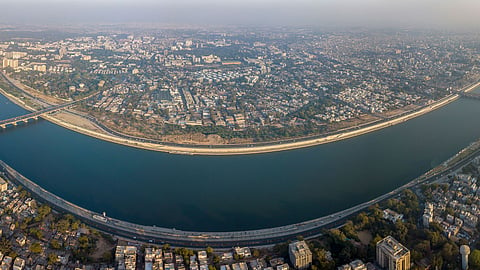World Rivers Day: Sabarmati River in Ahmedabad — A lifeline transformed or lost?
Ahmedabad, a city built along the banks of the Sabarmati River, owes much to its presence. Once a vibrant lifeline for the city, the river carries a rich history and countless cultural and historical associations.
However, on this World Rivers Day, as we reflect on the state of the Sabarmati, it’s worth asking whether this once-pristine river still exists in its original form—or if it has been transformed beyond recognition.
The changing face of Sabarmati
The Sabarmati has long been a symbol of life for Ahmedabad. Flowing through the city for centuries, it supported agriculture, trade, and communities while giving rise to landmarks like the Sabarmati Ashram. Today, however, the question lingers—does the Sabarmati still exist as it once did?
The Sabarmati Riverfront Project, launched in the early 2000s, aimed to transform the riverbanks into a modern urban space with promenades, gardens, and recreational activities. The Riverfront, now a popular spot for leisure and tourism, has undoubtedly revitalised the area.
However, this development came with extensive modifications to the river itself. Dredging and concrete embankments altered its natural flow, leading many to wonder if the Sabarmati we see today is still the same river or a man-made version of it.
Pollution has also taken its toll. Over the years, industrial waste and untreated sewage have flowed into the river, degrading its water quality and threatening its ecosystem. Despite ongoing efforts like the installation of sewage treatment plants and cleanup drives, the Sabarmati struggles with environmental challenges. The river, once a clean and vital resource, now faces an uphill battle to regain its health.
The Sabarmati Today!
That said, the Sabarmati’s cultural significance remains intact. The Riverfront is a hub for locals, hosting festivals and community events, while the ashram stands as a symbol of Gandhi’s legacy. The river, in this sense, continues to play a crucial role in the city’s identity.
In the end, the Sabarmati does still exist in Ahmedabad, but it is not the river of the past. It has been reshaped, both physically and metaphorically, by urbanisation and pollution. Its survival now depends on balancing development with a renewed commitment to environmental preservation.
To get all the latest content, download our mobile application. Available for both iOS & Android devices.

